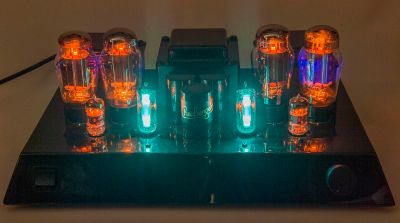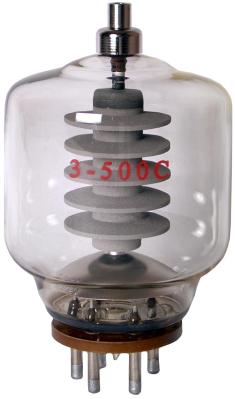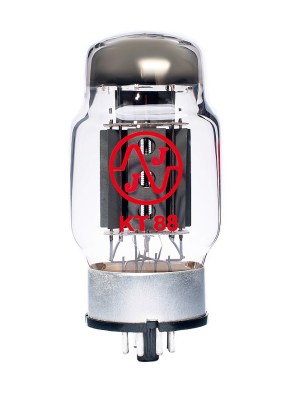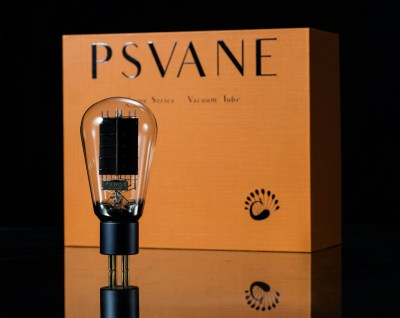
For most of us, electronic technology comes in the form of solid state devices. Transistors, integrated circuits, microcontrollers. But for the first sixty years or so of the field existing, these devices either hadn’t been invented yet or were at too early a stage in their development to be either cost-effective, or of much use. Instead a very different type of electronic component ruled the roost, the vaccum tube.
A set of electrodes in an evacuated glass envelope whose electrical properties depended on the modulation of the flow of electrons through them, these were ubiquitous in consumer electronics up until the 1960s, and clung on in a few mass-market applications even as far as the mid 1970s. As cheaper and more versatile semiconductors superseded them they faded from electronic parts catalogues, and the industry that had once produced them in such numbers disappeared in favour of plants producing the new devices. Consumer products no longer contained them, and entire generations of engineers grew up never having worked with them at all. If you were building a tube amplifier in the early 1990s, you were a significant outlier.
Alive And Kicking In The 21st Century

As our consumer electronics have become ever more digital in their make-up, interest has blossomed in analogue devices, or at least devices with a visibly analogue component. In particular the world of audio has begun to chase the elusive “tube sound”, whether it be in the context of intentionally overdriven amplifiers for the guitarist, or closer to perfect ones for the audiophile.
High-end hi-fi shops are full of tube-based devices, and a plethora of tube amplifier kits are available for the electronics enthusiast. Tubes can be bought under a bewildering array of brands often at eye-watering prices, something of a surprise for a technology which might be presumed to have disappeared over four decades ago. This does raise an interesting question though, with such a large number of tube brands on the market, where are they all made, and how have their manufacturers survived for so long? The answer is relatively straightforward, yet in other aspects a story of labyrinthine complexity.

While consumer vacuum tubes might have disappeared from mundane electronics decades ago, it’s first worth pointing out that many of the old names in the vacuum tube business didn’t stop manufacturing vacuum tubes, they simply stopped making the tubes you might be familiar with. There are industrial applications in which vacuum devices are very much still with us , even though in many cases they have semiconductors snapping at their heels.
High power RF amplifiers for UHF and higher frequencies for example still use vacuum tubes, be they specialised planar tubes or slightly more exotic fare such as klystrons. Similarly there are specialised RF applications that still use travelling wave tubes, and very high power industrial equipment that uses vacuum and gas-filled tubes for control or rectification.
But who is making the “normal” tubes — the smaller glass-envelope tubes, small triodes and pentodes such as you’d find in that guitar amplifier? We recognize some names from times past such as Telefunken or Mullard, others are modern brands such as JJ or Fender’s Groove Tubes brand, and others are clearly Russian or Chinese names such as Svetlana, SovTek, “Winged C“, or Shuguang. Clearly there are not as many tube factories left in the world as there are logos stamped on the glass of imported tubes, so what on earth is going on?
A Technology For The Few, Not The Many Any More
The answer is that the consumer tube business in 2020 is no longer a commodity component market producing the lifeblood of a million televisions and radios, instead it’s a boutique operation serving a niche market. Looking at the tubes available, it’s clear that if you are searching for an obscure 1050s small-signal RF tube you’ll be out of luck; these are mostly audio amplifier parts, double triodes, output pentodes, even the occasional power rectifier, and at costs that would raise an eyebrow or two for buyers of their originals.
A current-manufacture Mullard-branded ECC83 (12AX7) general purpose small signal double triode for example costs $43.20 (£35.09) in 2020, while browsing a 1957 copy of Wireless World we find the same part number advertised for 8 shillings and thruppence, which is £0.41 ($0.51) in post-decimalisation British money. Using the Bank of England’s inflation calculator that comes out at about £9.96 ($12.27) today, so the modern re-issue is more than three times as expensive as was the genuine article in its heyday. This is evidently a business with a significant mark-up, and the world’s remaining tube factories are cashing in.

Investigating further, we find that tube manufacture of this type appears to be entirely absent from the Americas and Western Europe. It survived the decline of the 1970s in Russia, China, and the formerly Communist states of eastern Europe, and as Soviet communism fell and the Chinese economy grew in the 1990s it emerged from the shadows to supply the audio market. These count among them factories that have been in the tube business for a very long time indeed, and their products have many proven decades of reliable service.
So if you buy a tube with a Western sounding brand name today it will have been made in the same Eastern factories as those with an obviously Communist heritage, and thus given that the same part numbers are available from the same sources under those cheaper brands it’s difficult not to wonder whether or not they are in fact exactly the same tubes but with an inflated price.
Communism, Folks, The Secret To High-End Audio

In the Slovak Republic are JJ, a very long-established tube manufacturer who were previously the consumer end of the Tesla vacuum device range. They don’t admit to branding their tubes for anyone else on their website, but they are reputed to be the source of those Telefunken-branded parts. Moving eastwards to Russia we then find SED-SPb in St. Petersburg, for whom consumer tubes are listed on the website as a small part of their range alongside industrial and high-power RF vacuum devices. They were previously the producers of the Svetlana range of tubes through the Soviet era, and though they no longer have that brand name they retain the winged C logo from that era. It’s unclear whether they are still involved in the production of branded tubes as their website is not very informative, but the “Winged C” tubes manufactured by them are still on sale.
Further across Russia in the southern Russian city of Saratov is the Expo-PUL factory, and here is where the story becomes interesting. It’s owned by the American Electro-Harmonix company, who in turn hold the rights for a host of older brands including Svetlana, Sovtec, Mullard, and Tung-Sol. It’s here that reissued Mullard ECC83 is made, and it has made the news in the past as Russian mobsters reportedly tried to seize it.

Into China, and the situation becomes rather opaque. China has a selection of larger manufacturers who produce tubes to a very high quality for the high-end export trade, but there are also inexpensive tubes on the market with scant manufacturer logos and little else in the way of traceability. If you pay $20 for an AliExpress tube headphone amplifier kit then it’s likely you’ll receive one of this latter variety, but its origins will be unclear.
The largest Chinese manufacturer is ShuGuang, based in Changsha, in Hunan province. They manufacture a large range as well as producing components for other brands. Their upstart competitor PSVane is also based in Changsha, and concentrates specifically on the high-end audio market. It’s unlikely for example that a 45 cent 6j1 small-signal pentode will have come from either of these two manufacturers or their smaller high-end competitors though, so it’s clear that there are more Chinese tube manufacturers at all levels of the market than can easily be found from the other side of the world.
Is It Really Worth It Though?
As someone who has been a vacuum technology enthusiast for four decades now it makes me happy to find that tubes are still in production and their industry appears healthy for now. But my tour through the world of 21st century tube manufacture leaves me slightly disappointed that so much of their marketing is still clouded by mythology.
As someone who was building tube amplifiers with Yugoslavian TV tubes back when it was extremely unfashionable, I understand the allure of that elusive “tube sound”, but experience has taught me that it’s not as great a thing as its proponents would have you believe. Even the distortion characteristics sought by musicians can more easily be created through DSP in 2020, so I can’t help the feeling that people are being led astray as I see essentially the same tube being sold at a range of different prices based solely on its brand. Enjoy working with tubes, and enjoy listening to a tube amplifier. But don’t make the mistake of falling into the trap of falling for the hype, and never lose sight of the engineering.
